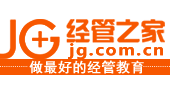A linear program can be solved by multiple methods. In this section, we are going to look at the Graphical method for solving a linear program. This method is used to solve a two variable linear program. If you have only two decision variables, you should use the graphical method to find the optimal solution.
A graphical method involves formulating a set of linear inequalities subject to the constraints. Then the inequalities are plotted on a X-Y plane. Once we have plotted all the inequalities on a graph the intersecting region gives us a feasible region. The feasible region explains what all values our model can take. And it also gives us the optimal solution.
Let’s understand this with the help of an example.
Example: A farmer has recently acquired an 110 hectares piece of land. He has decided to grow Wheat and barley on that land. Due to the quality of the sun and the region’s excellent climate, the entire production of Wheat and Barley can be sold. He wants to know how to plant each variety in the 110 hectares, given the costs, net profits and labor requirements according to the data shown below:
| Variety | Cost (Price/Hec) | Net Profit (Price/Hec) | Man-days/Hec |
| Wheat | 100 | 50 | 10 |
| Barley | 200 | 120 | 30 |
The farmer has a budget of US$10,000 and an availability of 1,200 man-days during the planning horizon. Find the optimal solution and the optimal value.
Solution: To solve this problem, first we gonna formulate our linear program.
Formulation of Linear ProblemStep 1: Identify the decision variables
The total area for growing Wheat = X (in hectares)
The total area for growing Barley = Y (in hectares)
X and Y are my decision variables.
Step 2: Write the objective function
Since the production from the entire land can be sold in the market. The farmer would want to maximize the profit for his total produce. We are given net profit for both Wheat and Barley. The farmer earns a net profit of US$50 for each hectare of Wheat and US$120 for each Barley.
Our objective function (given by Z) is, Max Z = 50X + 120Y
Step 3: Writing the constraints
1. It is given that the farmer has a total budget of US$10,000. The cost of producing Wheat and Barley per hectare is also given to us. We have an upper cap on the total cost spent by the farmer. So our equation becomes:
100X + 200Y ≤ 10,000
2. The next constraint is, the upper cap on the availability on the total number of man-days for planning horizon. The total number of man-days available are 1200. As per the table, we are given the man-days per hectare for Wheat and Barley.
10X + 30Y ≤ 1200
3. The third constraint is the total area present for plantation. The total available area is 110 hectares. So the equation becomes,
X + Y ≤ 110
Step 4: The non-negativity restriction
The values of X and Y will be greater than or equal to 0. This goes without saying.
X ≥ 0, Y ≥ 0
We have formulated our linear program. It’s time to solve it.
Solving a LP through Graphical methodSince we know that X, Y ≥ 0. We will consider only the first quadrant.
To plot for the graph for the above equations, first I will simplify all the equations.
100X + 200Y ≤ 10,000 can be simplified to X + 2Y ≤ 100 by dividing by 100.
10X + 30Y ≤ 1200 can be simplified to X + 3Y ≤ 120 by dividing by 10.
The third equation is in its simplified form, X + Y ≤ 110.
Plot the first 2 lines on a graph in first quadrant (like shown below)
The optimal feasible solution is achieved at the point of intersection where the budget & man-days constraints are active. This means the point at which the equations X + 2Y ≤ 100 and X + 3Y ≤ 120 intersect gives us the optimal solution.
The values for X and Y which gives the optimal solution is at (60,20).
To maximize profit the farmer should produce Wheat and Barley in 60 hectares and 20 hectares of land respectively.
The maximum profit the company will gain is,
Max Z = 50 * (60) + 120 * (20)
= US$5400





 雷达卡
雷达卡


















 京公网安备 11010802022788号
京公网安备 11010802022788号







